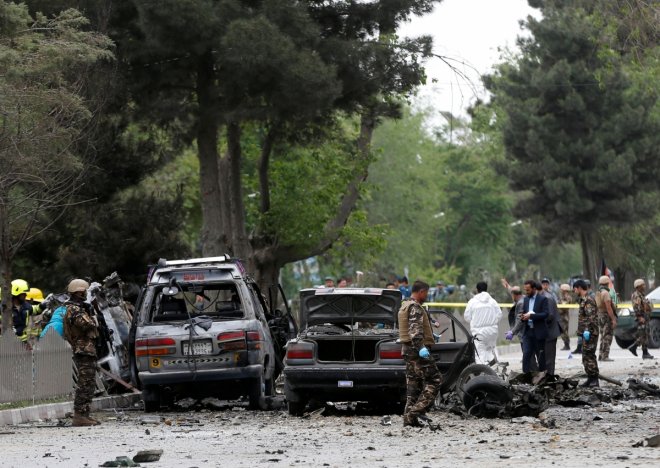
At least eight people were killed and 25 were injured, including three US service members, after a car bomb targeting a military convoy of North Atlantic Treaty Organization (NATO) Resolute Support mission exploded near the US Embassy in Kabul on Wednesday. The Islamic State group has claimed the responsibility of the attack in a statement carried by its Aamaq media arm.
The blast hit the NATO coalition convoy at 7:55 a.m. (local time) in Kabul police district 9, near the embassy and Supreme Court, one of the busiest areas of the city. The bomber attacked a group of armoured personnel carriers designed to withstand large blasts.
Interior ministry spokesperson Najib Danish said the blast targeted a "convoy of foreign forces passing the area". "We are checking the details...Unfortunately most of (the victims) are civilians," he told AFP.
He added: "We are still checking the nature of the explosion, but I confirm a convoy of foreign forces was passing by when the explosion happened."
U.S. Navy Cpt. Bill Salvin, a military spokesman, has confirmed that three soldiers were wounded in the attack.
According to reports, the blast also damaged various civilian vehicles near the NATO convoy. Windows were shattered up to several hundred metres away from the scene. Traces of blood and clothing could be seen at the blast site. The blast follows a threat by the Taliban, last month, to target the foreign forces.
The Nato-led Resolute Support mission said on Twitter that the armoured personnel carriers, which are designed to resist large blasts, were able to return to a coalition base. It added that they were in a stable condition with non-life threatening injuries and were being treated at coalition medical facilities.








